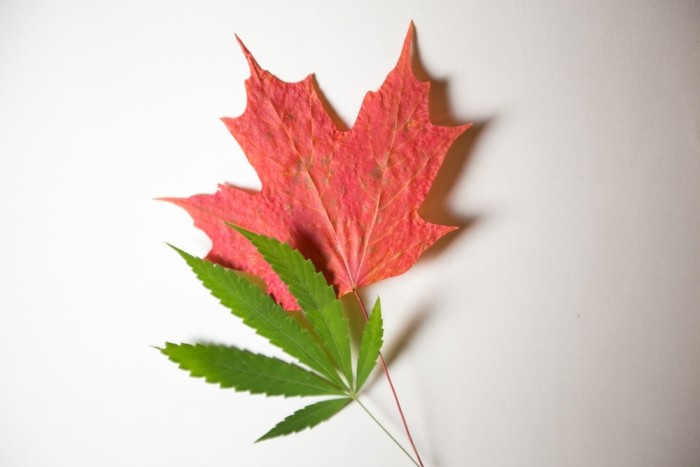Cannabis
The Pricing Dilemma of Legalized Canadian Marijuana
October 17th will mark a significantly important day for many Canadians. This is, of course, the day on which marijuana will be legalized across the nation. Whilst many are ecstatic having had stoned dreams about the opportunity to finally purchase their weed from legal sources which have been checked and verified, there remain several questions in the air about the upcoming legalization. Many of these are centered on pricing and how much your newly legal weed will actually cost you.
Here we will take an in-depth look at the pricing dilemma which faces both consumers and producers in the industry, the impact which this may have on supply, and ultimately, how much you can expect to pay.
The Fundamentals of Pricing and the Legalization
For Consumers
As things stand, the average price of illegal weed nationwide is estimated at $8.24 per gram. This is according to a recent study carried out by Deloitte. With this price, naturally, the consumer can take home their product without any additional taxing.
Now, let’s consider the price of the same gram once the legalization changes kick in. Firstly, the federal government has proposed an implementation of a $1 per gram or 10% excise tax on the retail price. This will be in addition to paying the usual GST/HST of approximately 15% depending on the area. In total, this levies a 25% tax hike on the final price of your product.
Adding this even to the black market prices make unpleasant reading for consumers. When we further consider that Health Canada is proposing a $7-$9 per gram price prior to retail, it is quite evident that a price increase is on the way.
With the initial demand set to be tremendous, this will only create further price pressure on consumers. As with any supply and demand situation in the world of business, prices in the initial interim period are likely to soar. Ultimately, this creates a market which is unsustainable for consumers, paying astronomical amounts for their weed. It is not beyond the realms of possibility that buyers would revert back to the illicit market for tax-free purchases.
The government line in relation to the taxes and charges which will be levied goes along the line of, this is the price you will have to pay to ensure safety, quality of production, and oversight.
For Suppliers
For all intents and purposes, the sound of soaring supplies and pricing increases may be music to the ears of many suppliers. This would, unfortunately, be a very shortsighted view of the situation.
In the immediate aftermath of legalization, suppliers are sure to benefit from a surge in demand. This will come from all angles, seasoned veterans of the industry who will enjoy the newfound freedom at least for the moment, combined with a swathe of newbies eager to get in on the now legalized action.
The negative side for suppliers is that with the increased price, much of this is derived from the addition of government based taxes. These are of no benefit whatsoever to producers. Couple this with the fact that taxes and duties will invariably be laid on the producers too, and we could very realistically be faced with a crippling rise in production costs due to legalization and ensuring the nation has their piece of the pie to bolster the cabinet coffers.
Eventually, when the initial furor dies down, the prices could very well tumble. This has been evidenced already in the US markets where prices have dramatically fallen off and left an industry hanging on and many producers packing up their facilities.
Many factors can be attributed to this, whether it is rising costs, government obligations or a widespread availability, either way, a pattern has been formed. Even within the current Canadian market, we are seeing some producer’s call it quits. Rising production costs, sometimes over $1000 per pound are being cited. With increased oversight and bureaucracy added to the mix, even these high prices could be subject to increase.
Key Factors Driving the Price of Legalized Weed
As we have outlined, there is a dangerous trend emerging which may see the price of legalized marijuana skyrocket and all the while leave producers with less of a bottom line than they currently possess on the black market. What then is driving these price changes?
- The implementation of government taxes and excise duties.
- The short-term demand giving way to an oversupply has negative connotations for growers and consumers alike.
- Increased government oversight and regulation on the industry ultimately leads to a sharp increase in production costs. These are already becoming untenable.
- An increasing demand within the market will put additional pressures on the industries natural resources of land and plants. These are already under severe strain.
Other Factors Impacting the Industry
As we have just highlighted, price and government intervention are not the only things which are causing the sector to buckle under stress. There are also more natural factors which have placed an unexpected burden on producers in recent months.
Even without legalization, the cost of production has been soaring. This has led to many exiting the industry. As legalization approaches, the market price for marijuana has been falling nationwide with market sentiment feeling that there is no point in taking risks buying on the black market when legalization is around the corner.
When we couple these issues with those of mother nature, we reach a point where marijuana cultivation in the last years has proved the undoing of many. No matter how many loud voices will deny climate change, it has been thoroughly seen in action within the Canadian weed industry within the past summer. A hugely hot and humid summer has presented growers with a variety of issues impacting the quality of their flower. In fact, it has been reported from industry sources that up to 95% of the raw flower had been let with some issues.
A further factor to consider, particularly in the early stages of legalization, will be over-cultivation in order to meet the newly established demand. This presents a real danger to not only the future of the industry but also to the quality of the end product. Unfortunately, no amount of oversight and legalization can ensure consistent and everlasting quality.
This is an issue which also exemplifies the volatility of the industry. Study of the finances of pot producers shows that there is not always fantastic clarity within the sector and a number of unpredictable variables can wildly affect the overall price.
Future Market Pricing and Conditions
So, with all of these factors at play, where is the price of marijuana headed post-legalization?
From an economics perspective, it would be fair to suggest there will be an initial surge in demand after the October 17th legalization. This will ultimately push prices higher than they possibly have ever been before. Experts suggest that prices as high as $20 per gram could be seen. Within the short-term, this should be satisfactory for both consumers and suppliers.
It is impossible to say how long this may take, but as with everything in business, the process will be cyclical. The next stages will see the emergence of a dropping demand as price becomes too high. This will be especially true if Canada fails to eradicate the black market for weed.
This may well result in large-scale price drops within the legalized industry. This is something which has already been evidenced in Washington after 4 years of legalization. The compound effect could be that may producers who remain with the industry would be forced out.
The resulting impact on consumers could also be severe, hitting them in the pocket with prices per gram like they have never previously seen and potentially driving them back off the radar.
In terms of conditions, it is vital that supply be carefully managed in line with proper cultivation. This is especially important in the first season post-legalization where high prices may provide temptation to cash-in. Holding firm will help ensure the best quality production which can be both scalable and sustainable in nature.


